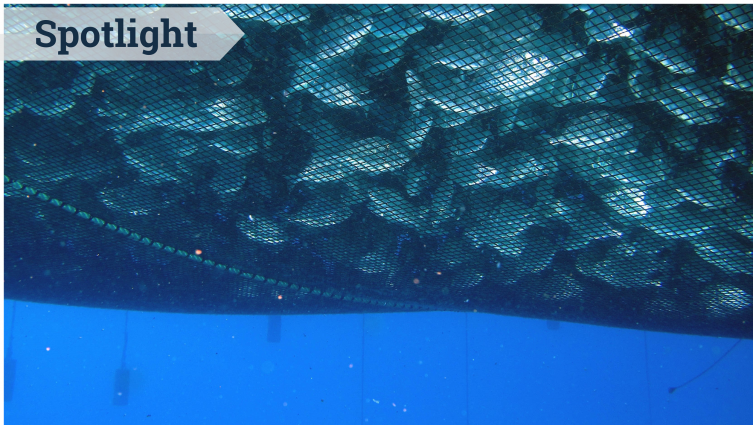European Parliament discusses transport of live farmed fish based on CCMAR study
Aquaculture is currently one of the fastest-growing food-producing sectors in the world. The number of fish farmed, transported and slaughtered every year is enormous, with more than 100 billion fishes estimated to be produced per year, solely in this industry.
It has been demonstrated that fish are sentient beings, i.e. animals that can experience pain, fear and other emotional states. The transport of live fish presents major challenges for their welfare, so ensuring the best possible welfare for these animals requires careful planning, gentle loading, monitoring and maintaining conditions before, during, and after transport in order to limit the stress factors.
Study analyses in depth the particular welfare needs of live animal transport
The most relevant provisions in the European Union (EU) animal transport regulation fall short of international recommendations when it comes to key areas such as allocation of responsibilities, elements of travel planning, monitoring and maintaining water quality, designing vehicles and fittings for the purpose, and post-transport monitoring.
Although there are guidelines and protocols increasingly available across the EU, its implementation is not always efficient: there is duplication of effort in developing guidelines, some divergence in standards, and none are comprehensive enough to cover all types of transports and animals.
Unfortunately, even the best guidelines fall short on contingency planning for all journeys; they lack depth in certain countries and sectors, addressing only some of the critical issues highlighted; and third-party certification schemes consider only a few relevant criteria. This is especially problematic when we consider the number of species farmed worldwide: over 300 (tenfold of land animals).
Thus, the European Parliament's Committee of Inquiry requested a document to discuss the Protection of Animals during Transport (ANIT). The document taken into consideration is a study written by our researchers João Saraiva, Pablo Arechavala-Lopez and Maria Cabrera, which analyses in-depth the welfare needs in live animal transport of aquatic animals. The study describes the key causes of suffering about the needs of aquaculture fish and explores the strengths and weaknesses of EU regulations and current guidelines. The presentation and discussion of the report happened on the 25th of May, and while the findings were highly praised there were also concerns from many representatives of how the EU will tackle the questions identified.
The main challenges aquaculture fish face when transported
It is important to note that all farmed fish will be transported at least once in their life, either as larvae, juveniles and/or as adults. Transportation of live fish involves routines that contribute to a significant increase in stress and the impairment of fish welfare. In this study, the researchers identified the major challenges that fish face when transported, namely:
- Inappropriate starvation periods can deplete immune function and body condition.
- Overcrowding can lead to poor water quality and mass mortalities as well as social distress.
- Loading which is often the most stressful part of the transportation process. Gentle harvesting and handling procedures and equipment are necessary to avoid physical injuries, disruption of fishes’ protective mucous coating, excessive stress and increased incidence of disease.
- Gentle movements and the maintenance of several critical water quality parameters are required for welfare and survival during the journey.
- The welfare impairments from transport continue for days after unloading.
Study has recommendations to mitigate the several challenges that have been identified
In this study, the authors deepen these key welfare animal issues in the top seven European aquaculture fish species: salmon, trout, seabream, seabass, carp, catfish and turbot. The authors conclude that live transport directly affects not only the welfare and survival of fish but also the quality of the product that reaches our table.
In the study, numerous recommendations are also made to mitigate the several challenges identified regarding the proper and efficient transportation of live fish.
You can find more information about this paper and the mitigation recommendations HERE.


